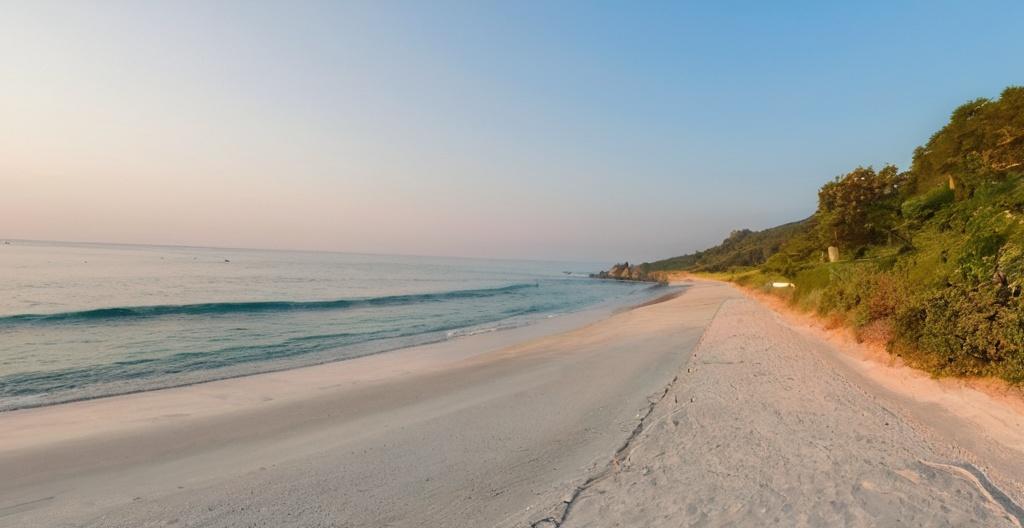Key Take Aways About Beaches in North Korea
- North Korea’s beaches offer unique charm but require permission and guided tours.
- Wonsan Beach is a scenic, uncrowded spot on the east coast.
- Songdowon Beach hosts international children’s events.
- Chilbosan beaches are notable for dramatic landscapes, less for swimming.
- Best time to visit is summer; winters are very cold.
- Accommodations are basic; expect minimal facilities.
- Food is fresh but limited, featuring local seafood and Korean dishes.
- The experience is more about the stories and cultural oddities than traditional beach relaxation.

Beaches in North Korea: A Rare Glimpse
North Korea might not be the first place that springs to mind when considering beach destinations. Yet, this isolated country, famous for its strict regime, does boast stretches of sand that hug the coastline. While the country’s political environment might deter many from visiting, those brave travelers who do venture in often find uncharted beaches with their own unique charm.
;East Coast Treasures
The east coast of North Korea, flanked by the Sea of Japan or what locals prefer to call the East Sea of Korea, offers some of the more accessible and scenic beaches. One such spot is the city of Wonsan, which is known not just for its beaches but also for its role as a port city. Wonsan’s beaches play host to Wonsan Beach, which offers a rare opportunity to swim in waters that are free from massive tourist crowds—mainly because, well, tourists are scarce in this corner of the world.
Now, if you’re lucky enough to get permission (because spontaneity isn’t exactly encouraged), you might end up at Songdowon Beach. This place is especially popular among locals and has hosted events such as the annual Songdowon International Children’s Summer Camp. Imagine a beach where children from around the world, well, at least the ones that have diplomatic ties with North Korea, dive into cultural exchanges and swimming contests. There’s something quaint about it, even if it sounds like the setup for a quirky indie film.
Chilbosan Beaches
Up north, nearer to the border with China, lies Chilbosan, an area known for its natural beauty. The beaches here are perhaps less about swimming and more about taking in the dramatic landscape and rugged cliffs that surround them. The locals have a penchant for naming things descriptively, and Chilbosan translates to “Seven Treasure Mountain,” which adds a bit of folklore flair to your beach visit.
Security and Permission
Visiting any of these beaches isn’t a simple affair. Forget about turning up with a surfboard and expecting to hit the waves on a whim. Permissions are needed, and most beaches are accessible only as part of an organized tour. Tours are generally guided with a tight itinerary and vanishing off for a romantic midnight stroll under the stars might raise a few eyebrows—likely followed by some serious questioning.
Weather and Best Time to Visit
The best time to hit the sands would be during summer, from June to August, when the weather is warm enough for swimming, should swimming be on your itinerary’s agenda. Winters in North Korea are bitingly cold, which tends to put a damper on beach activities unless your idea of fun is building snowmen on the beach, in which case, December’s your month.
Accommodations and Facilities
When it comes to places to stay, expect simplicity over luxury. Wonsan boasts a few basic hotels where comfort is akin to what you might find in a 1970s time capsule. Bring your own entertainment because WiFi isn’t exactly a thing. Facilities at the beaches themselves are minimal; think changing shacks over luxurious cabanas, and be prepared to cherish the stark contrast from the commercialized beaches in more mainstream vacation spots.
Food and Dining
Now, if you’re a foodie, North Korean beach cuisine might not be something you’ve checked off your list. Grilled clams and seafood—not of the Michelin-starred variety, but fresh—are often available. You might also find traditional Korean dishes like kimchi or bibimbap at local eateries. Expect a unique twist, as local supplies dictate the menu rather than global culinary trends.
Final Thoughts
Visiting North Korean beaches is less about the classic beach bum experience and more about embracing the unique and slightly surreal. From swimming in uncrowded waters to witnessing a cultural oddity like Songdowon’s children’s festival, a trip to these beaches is likely to be more about the stories you’ll tell afterward rather than the suntan you’ll gain—that is, if you get past the bureaucratic hurdles to go there in the first place.